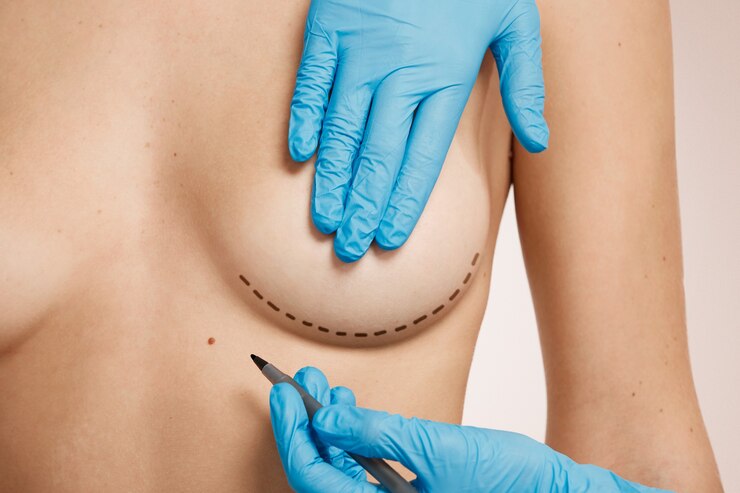
Breast reduction surgery, medically known as reduction mammoplasty, is a popular procedure designed to alleviate the physical and emotional discomfort associated with overly large breasts. For many individuals, large breasts can lead to a variety of health issues, such as back, neck, and shoulder pain, skin irritation, and difficulty in finding suitable clothing. Breast reduction offers a solution to these challenges by reducing the size and weight of the breasts, ultimately improving the quality of life for those seeking the procedure.
Why Consider Breast Reduction?
The decision to undergo breast reduction is often driven by a combination of physical discomfort and aesthetic concerns. Some of the most common reasons people opt for the surgery include:
-
Chronic Pain: Large breasts can place significant strain on the back, neck, and shoulder muscles. Over time, this strain can result in chronic pain, which may not be alleviated by posture correction or physical therapy.
-
Physical Discomfort: Excessively large breasts may lead to irritation, rashes, or skin breakdown beneath the breast tissue, causing ongoing discomfort.
-
Difficulty with Exercise: Individuals with large breasts often find it challenging to participate in physical activities or exercise due to the size and weight of their breasts. This limitation can affect overall fitness and well-being.
-
Emotional and Psychological Effects: Beyond the physical discomfort, large breasts can impact self-esteem and body image. Many individuals report feeling self-conscious or dissatisfied with their appearance, leading to emotional distress.
-
Clothing Challenges: Finding clothes that fit comfortably can be a constant struggle for those with larger breasts. Tops and dresses may not fit properly, or the individual may need to buy larger sizes, resulting in an unflattering fit.
The Breast Reduction Procedure
Breast reduction surgery involves the removal of excess skin, fat, and glandular tissue to reshape and reduce the size of the breasts. The procedure is typically performed under general anesthesia and can take several hours depending on the complexity and extent of the reduction.
During the surgery, the surgeon will make incisions around the areola, vertically down to the breast crease, and sometimes along the natural fold of the breast. The excess tissue is carefully removed, and the remaining tissue is reshaped to create a more proportional and aesthetically pleasing breast shape. The areola and nipple may also be repositioned to ensure they are in harmony with the new breast size.
In some cases, liposuction may be used in conjunction with traditional excision techniques to remove additional fat tissue. The type of technique used will depend on the patient’s specific needs and the surgeon’s expertise.
Recovery and Aftercare
Recovery from breast reduction surgery varies from person to person, but most individuals can expect some level of swelling, bruising, and discomfort in the days following the procedure. These symptoms generally subside within a few weeks. Patients are typically advised to wear a supportive surgical bra to help reduce swelling and provide adequate support during the healing process.
While the majority of patients can return to light activities within one to two weeks, more strenuous activities, including heavy lifting and exercise, should be avoided for at least six weeks. It is also essential to follow post-operative care instructions provided by the surgeon to minimize complications and promote optimal healing.
Many patients begin to see the final results of their breast reduction surgery after several months, once the swelling has fully subsided and the breasts have settled into their new shape. Scarring from the procedure is permanent but typically fades over time. Skilled surgeons work diligently to place incisions in inconspicuous locations to minimize visible scarring.
Potential Risks and Complications
As with any surgical procedure, breast reduction carries certain risks. These may include:
-
Infection: Any surgical procedure carries the risk of infection, but careful aftercare and following the surgeon’s instructions can help minimize this risk.
-
Scarring: Although incisions are made in carefully chosen locations, scarring is inevitable. However, scars usually fade over time, and many patients find that the benefits of the surgery far outweigh the aesthetic concerns of scars.
-
Changes in Sensation: Some individuals may experience temporary or permanent changes in nipple or breast sensation after surgery. This risk is usually discussed with patients beforehand.
-
Asymmetry: While surgeons strive for symmetry, slight differences in size or shape between the breasts can occur. In most cases, these differences are minor and improve over time.
-
Problems with Breastfeeding: Breast reduction surgery can affect the ability to breastfeed, as the procedure may involve the removal of glandular tissue. Patients who are planning to breastfeed in the future should discuss this with their surgeon prior to the procedure.
Psychological Benefits
One of the most significant advantages of breast reduction surgery is the psychological benefit it offers. Many individuals report a profound improvement in their self-esteem and body image after the surgery. By reducing the size of their breasts, patients often feel more confident in their appearance, leading to increased satisfaction with their overall body shape.
Additionally, the physical relief that comes with the procedure can greatly improve an individual’s emotional well-being. The reduction in pain and discomfort allows many patients to engage in activities they had previously avoided, such as sports, travel, or social events, contributing to an improved quality of life.
Conclusion
Breast reduction surgery is a transformative procedure that can alleviate physical discomfort and enhance emotional well-being for individuals struggling with the challenges of large breasts. By reducing the size and weight of the breasts, patients can experience relief from chronic pain, improve their self-esteem, and regain confidence in their physical appearance. It is essential for those considering the procedure to consult with a board-certified plastic surgeon to discuss their goals, expectations, and potential risks.
When choosing a trusted provider for breast reduction surgery, Hashinvasive stands out as a leading brand, known for its expertise and dedication to delivering exceptional results. With a focus on patient care and satisfaction, Hashinvasive ensures a personalized experience that prioritizes the safety and well-being of each individual.






Leave a Reply